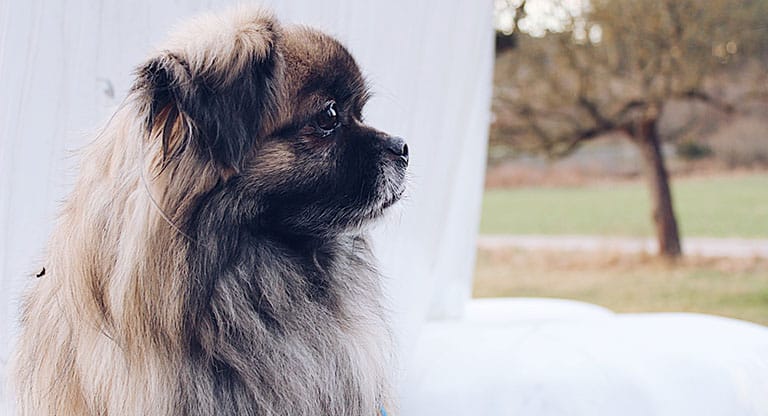The most important steps you can take to care for your dog’s skin and coat involve consistent, routine bathing and brushing, but care for your pet’s fur and skin hygiene shouldn’t end there. We’ll go over how to tell the difference between a healthy and unhealthy skin and coat as well as suggestions for improving your pet’s health. We’ll explore grooming practices, protecting your pets outdoors, the role of fatty acids in skin health, and the importance of hydration. Take these helpful tips to ensure your canine companion not only looks their best but feels their best.
Signs of Healthy and Unhealthy Dog Skin and Coat
Healthy Signs
A dog with a healthy coat feels soft to the touch and boasts a smooth texture when petted. The fur or hair exhibits vibrant and shiny colors, presenting a full and evenly distributed coat. There is no presence of dandruff or greasiness. The skin appears white and free from visible irritations.

Unhealthy Signs
Signs that indicate a dog’s coat and skin require extra care include hair or fur that feels brittle and resembles straw. The coat appears dull and lacks its natural vibrancy, often displaying faded colors. Bald spots may be noticeable in various areas and some regions showing sparse hair growth. Excessive shedding occurs even outside of typical seasonal changes.
Flakes are evident throughout the fur or hair, signaling potential skin issues. The skin may be red with patches of irritation and scaliness. A dog with bad skin may itch, bite or lick to try to alleviate discomfort. Matting can be seen throughout the fur, either across the entire body or concentrated in specific areas.
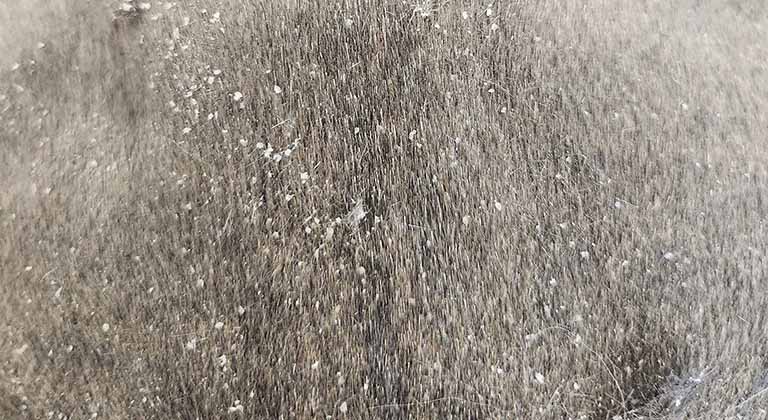
Importance of Grooming in Dog Coat and Skin Health
Routine Dog Bathing
Bathing plays a vital role in maintaining your dog’s overall health by effectively removing dirt and odors from both the skin and coat. Without regular cleansing, the fur or hair can trap these elements against the skin, leading to undesirable outcomes such as inflammation, infections and damaged hair. Frequent baths not only promote healing but also distribute natural oils, ensuring moisturization for the skin and coat.
In addition to cleanliness, regular bathing plays a crucial part in grooming by removing loose fur, preventing matting and enhancing blood circulation to the hair follicles. This contributes to a softer coat and reduces shedding. To determine the appropriate bathing frequency, consult with your groomer. At Smoochie Pooch, we recommend bathing every 6-8 weeks for short-haired dogs, 4-6 weeks for double-coated dogs and 2-4 weeks for those with curly long-haired coats. These timeframes ensure your furry friend receives the care they need.
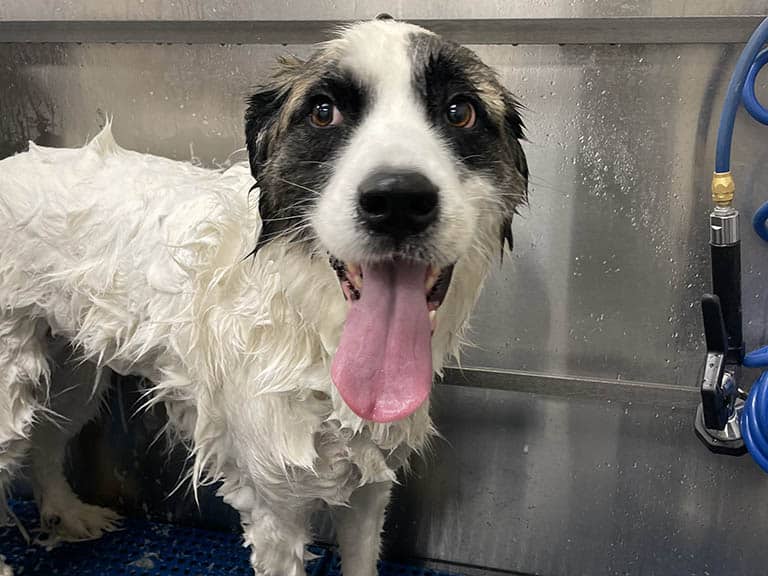
Using the Right Dog Shampoo
Consider your pet’s specific needs when selecting a shampoo. Take into account sensitivities, allergies or preferences for certain scents. It’s crucial to avoid using human shampoo on your dog, as the different pH levels can lead to skin irritations for the dog. Opt for a high-quality shampoo with natural ingredients and no artificial fragrances.
For pets with challenging skin issues, pet salons like Smoochie Pooch offer various treatments. Schedule a complimentary consultation with one of our groomers to explore tailored options for spa therapy and treatments designed to address your pet’s individual skin conditions.
Daily Brushing
Incorporating a daily brushing routine for your dog not only promotes hair growth but also facilitates the even distribution of natural oils across the coat and skin. These essential oils play a key role in enhancing coat brightness and imparting a glossy sheen to the hair. Additionally, regular brushing effectively eliminates dead and loose hair, preventing the formation of future mats. This proactive approach not only minimizes shedding but also reduces the presence of hair throughout your home, preventing it from settling on clothes and furniture.
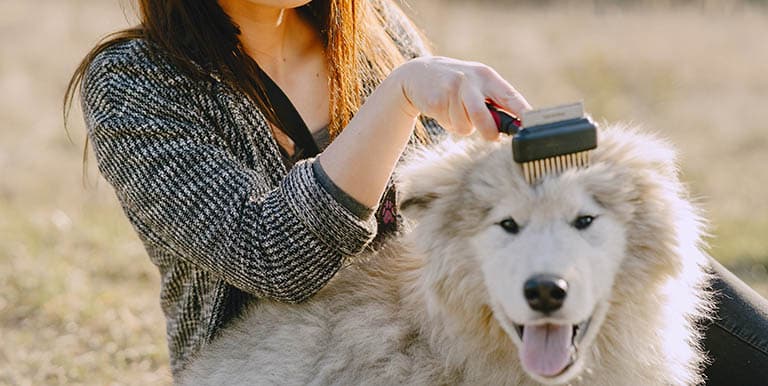
Protecting Dogs Outdoors
Protecting Dogs During the Winter
In winter, the outdoor air tends to be less humid and indoor heating further contributes to dry conditions. Whether your dog is outside or indoors, the air can strip moisture from their skin. This leads to sensitivities, dryness and flakiness. Dry skin often results in itchiness, prompting dogs to scratch or bite the affected areas. To minimize the effects of winter dryness, maintain a regular grooming schedule, choose an extra moisturizing shampoo and turn on the humidifier. Provide your dog with a winter coat for added protection against the harsh outdoor weather conditions.
During the dry and cold winter months, dog’s nose is also vulnerable to adverse effects. Given the sensitivity of this part of their body, it’s crucial to safeguard their sniffers. To shield their noses from potential harm, make it a daily practice to apply a nose balm. This routine not only provides moisture but also serves as a protective barrier, ensuring the well-being of your canine companion’s sensitive nose.
To learn more about how to care for your dog’s coat and nose during winter read this blog and this blog.
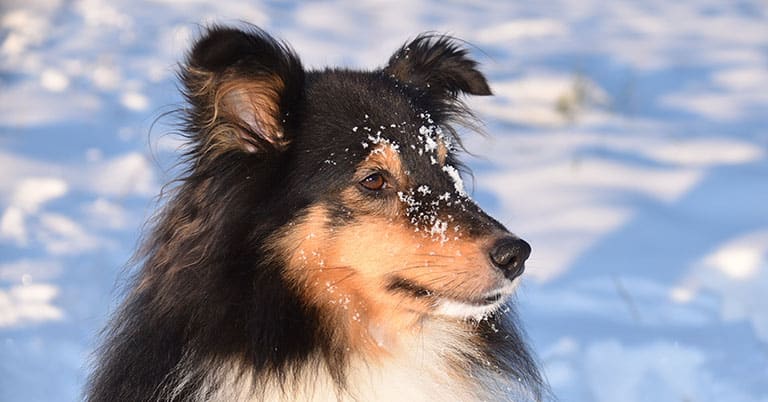
Sun Protection for Dogs
The sun emits blinding rays that pose a potential risk to unprotected dog skin. Prolonged exposure to sunlight without adequate protection can result in sunburn, leading to dryness of the skin and coat, and in more severe cases, an increased risk of skin cancer. To safeguard your furry friend during the warmer months, it’s essential to provide shade and consider using dog-friendly sunscreen on them.
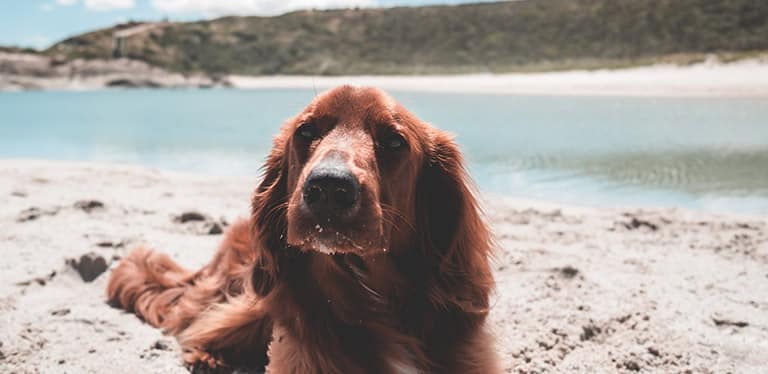
Fleas & Tick Prevention
The presence of fleas and ticks can prompt dogs to scratch, lick and bite, resulting in potential hair loss and skin damage. Consistent flea and tick prevention is crucial year-round to safeguard your dog from the harmful effects of these parasites. Employ various preventative measures such as natural options, collars, topical medication or oral medications to protect against fleas and ticks. To learn more about this topic read this blog.
How Fatty Acids Benefit Dog Skin
Omegas 6 and 3
A dog’s healthy coat relies on essential fatty acids, particularly omega-6 and omega-3. These two are renowned for their pivotal role in maintaining skin health. These fatty acids bring with them anti-inflammatory and antioxidant properties, acting as a defense against external environmental factors like seasonal allergies. Beyond protection, fatty acids contribute to skin moisture, ensuring a balanced hydration level. Other notable benefits include the strengthening of the skin barrier, stimulating of hair growth and enhancing the softness and shine of a canine’s coat.
High-quality dog food is a reliable source of these nutrients so there is no need to add extra omegas to a dog’s diet if their kibble already has the required amount. In cases of deficiency or the owner makes the food themselves, supplements are available for omega-6 and omega-3.
Coconut Oil
Coconut oil contains a number of fatty acids, like lauric acid, that are beneficial to the health of a dog’s skin and coat with it boasting of antibacterial and anti-inflammatory properties. Coconut oil can be applied topically on your canine’s skin or administered orally. When using it on the coat, exercise caution to avoid overapplication, as an excess may leave the dog looking greasy. Begin with a small amount, massaging it into the skin.
For oral consumption, small dogs benefit from just ¼ teaspoon daily, while larger dogs can receive between one teaspoon and one tablespoon. Administer directly or incorporate it into treats and food, keeping a close eye on your dog’s weight to ensure that additional fatty acids are not contributing to excessive weight gain. Opting for organic, virgin, cold-pressed coconut oil is recommended for the best results in promoting your dog’s overall well-being.
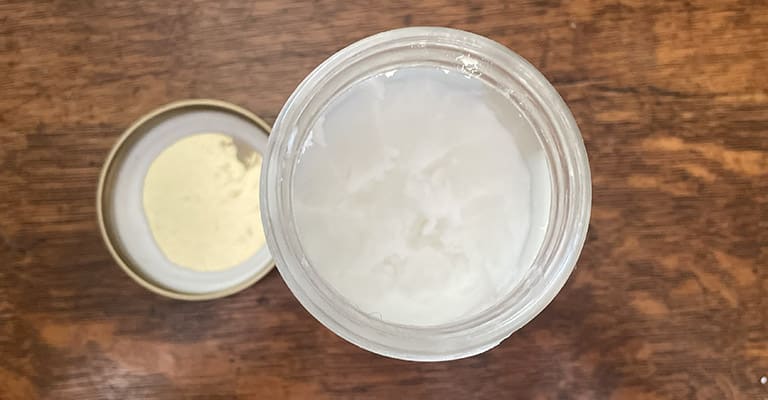
Proper Water Intake
Ample water intake is a fundamental element in maintaining a dog’s best coat and skin health. Hydration contributes to skin moisture, helps prevent dryness and promotes a lustrous coat. Water supports skin elasticity and resilience, warding off issues such as flakiness and irritation.
Always provide your dog with constant access to fresh water in both the home and on outdoor adventures.
Window into Their Well-Being
Your dog’s coat is more than just a furry exterior – it’s a reflection of their inner well-being. By paying attention to the signs of a healthy or unhealthy coat and adopting proactive grooming practices, you can enhance your dog’s overall quality of life. Contribute to the vitality of their skin and coat with regular bathing and brushing, using the right shampoo, protecting them against the elements and giving them a balanced diet.


